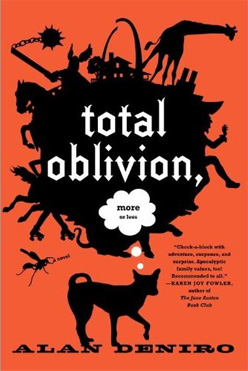The Literary Magazine, of the Future
Bruce Sterling’s essay on design, the potential of design, and the design of fiction, is something that anyone interested in those issues should read-moving away from the tired arguments of why science fiction is dying, why it’s not dying…anyway, I tend to get those two things confused. Of course the pulp era has left its imprint on where the field is today, and how it sees itself, in ways that most people take for granted (still!). The more telling question resides in the use of experiential technologies:
What truly interests me here is the limits of the imaginable. Clearly, the pulp infrastructure limited what its artists were able to think about. They wore blinders that they could not see and therefore could not transcend.
The typewriter limited writers. Magazine word counts limited writers. Even the implicit cultural bargain between author and reader introduced constraints on what could be thought, said, and understood in public. Those mechanisms of interaction-the letter columns, the fan mail, the bookstore appearances, the conventions-they were poorly understood as interaction. They were all emergent practices rather than designed experiences.
I would also argue that most literary magazines, collegiately based or otherwise, also fail basic marks on design. But that’s another story.
After reading this, I thought it would be interesting to do a thought experiment on what a new “magazine” design might look like. I use the word magazine very tenatively, because not only would the cross-fertilization come from the content of fiction (if we take the assumption that genre distinction are, at heart, arbitrary) but also the use of various technological platforms. To perhaps build something from the ground up that can itself augment and shape the reading experience of the fiction.
Premise: using a wiki-like and custom social networking platform, allow for the collaboration between various writers who are invited to the site for one-month stints as “fellows.”
Hope: that the “fiction research” premise leads to greater experimentation and surprise during the duration of a group of writers’ stay.
Features:
1. The typography must be strong. It can’t be jokey, white text on black background, or shoddy.
2. The application process for a group of fellows for a particular month must be open to anyone; with any luck there is a good mix of older and newer writers.
3. The magazine must not be non-fiction (and theory) adverse. Whether this comes from blogging/microblogging tools embedded in the site, digressions and discussions, or whatever-there shouldn’t be a high wall between various forms of prose.
4. Serialization, as a nod to one of the hallmarks of the pulp era, will be encouraged. This might involve a mini-episodic arc of fiction within a given month, taking the reins of previous serializations from months past, and working with other writers to create shared worlds in unexpected ways.
5. Alumni of the magazine will be encouraged to participate in future months as readers, continuers of previous conversations, etc.
6. At the same time, the readership will be given all the necessary tools to find out how they would like to read the magazine-and by extension, how the magazine as an ongoing work should be written.
____
This is a first draft; any other suggestions would be appreciated. Of course, this is a thought experiment-I don’t really have the time of late to really implement this! Maybe some day.





I quite like this idea and think it would be a fascinating experiment.
However, the inevitable issue here-in my opinion-would be the money paid to the ‘fellows’. How would that be earned? Per word posted, so that quantity is rewarded? A pay-per-view?
It would be interesting to see if it would develop into a sort of round-table, where everyone tosses ideas around, collaborates and continues building. The possibilities there are endless!
Good question. I was thinking perhaps a flat stipend or retainer fee per month-keep it basic and upfront. With perhaps a tip jar for readers who were also feeling extra generous.
That kind of collaboration would be really intriguing I think!
Interesting stuff Alan. I’d say that the fellows would be paid a set amount for the month’s (or whatever period’s) work. Sometimes you (the reader, editor, whatever) will get huge returns for the $, sometimes much less, but that would be part of moving the behind-the-scenes work of writing into the forefront — which is part of what this Mag2.0 seems to be about?
Serialization seems to me to be one of the keys to bringing and building a readership so I think some of the fellows might need longer stints to keep building things. (Wonder if this would work at Strange Horizons, etc.?)
And this is something that at first or maybe ongoing might need to be grant funded as god only knows where if any revenue would come from. (TV rights?)